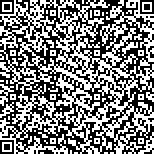| 摘要: |
| [摘要] 目的 探讨经食道超声心动图(TEE)在体外循环(CPB)心脏手术麻醉中的应用效果。方法 选择2019年2月至2021年2月在肇庆市第二人民医院实施CPB心脏手术的心脏病患者35例。其中主动脉瓣置换12例,二尖瓣置换+主动脉瓣置换10例,二尖瓣置换13例。术前、术中均进行TEE监测,评价手术效果,观察心脏复跳后以及CPB停机前的气体量分级,以及术前(T0)、术中10 min(T1)、术中30 min(T2)、术中60 min(T3)患者乳酸、平均动脉压(MAP)水平的变化。比较手术前后患者每搏量(SV)、面积减少分数(FAC)、心脏指数(CI)、速度时间积分(AVTI)。结果 术后35例患者瓣叶均可以正常活动,未发现瓣周漏,心脏复跳至CPB停机平均为(25.26±5.01)min,无并发症发生。35例患者心脏复跳后,有27例患者左心房存在不同程度的气体,其中1级12例,2级10例,3级5例;CPB停机前只有6例为1级。在T0、T1、T2、T3时间点,患者乳酸、MAP水平变化不显著(P>0.05)。与术前比较,患者术后CI、AVTI、FAC、SV均升高,比较差异有统计学意义(P<0.05)。结论 心脏病患者CPB心脏手术麻醉中进行TEE监测可准确评价瓣膜情况以及手术效果,在心内排气以及CPB停机等方面具有重要的指导意义。 |
| 关键词: 经食道超声心动图 体外循环 麻醉 心脏手术 |
| DOI:10.3969/j.issn.1674-3806.2022.01.11 |
| 分类号:R 614 |
| 基金项目:肇庆市科学技术局科研项目(编号:190418174163337) |
|
| A study on the application of transesophageal echocardiography in anesthesia for cardiac surgery under cardiopulmonary bypass |
|
CHE Long-tong, LI Zhen-xing, ZHOU Shao-yu, et al.
|
|
Department of Anesthesiology, Zhaoqing Second People′s Hospital, Guangdong 526040, China
|
| Abstract: |
| [Abstract] Objective To explore the application effect of transesophageal echocardiography(TEE) on anesthesia for cardiac surgery under cardiopulmonary bypass(CPB). Methods Thirty-five patients with heart disease who underwent CPB cardiac surgery at Zhaoqing Second People′s Hospital from February 2019 to February 2021 were selected. Among them, there were 12 cases receiving aortic valve replacement, 10 cases receiving mitral valve replacement+aortic valve replacement, and 13 cases receiving mitral valve replacement. TEE monitoring was performed before and during operation to evaluate the effect of the operation, and the gas volume classification was observed after heart resuscitation and before CPB shutdown. The changes in lactic acid and mean arterial pressure(MAP) levels of the patients before operation(T0), intraoperative 10 min(T1), intraoperative 30 min(T2), and intraoperative 60 min(T3) were observed. The stroke volume(SV), fraction of area change(FAC), cardiac index(CI), and aortic velocity time integral(AVTI) of the patients were compared before and after operation. Results The valve leaflets of the 35 patients were able to move normally after operation, and no paravalvular leakage was found. The average time from heart resuscitation to CPB shutdown was (25.26±5.01)min, and no complications occurred. In the 35 patients, 27 patients had different degrees of gas in left atrium after heart resuscitation, including 12 cases of grade 1, 10 cases of grade 2, and 5 cases of grade 3. Before CPB shutdown, only 6 cases were classified as grade 1. There were no significant changes in the levels of lactic acid and MAP in the patients at the time points of T0, T1, T2 and T3(P>0.05). Compared with those before operation, the levels of CI, AVTI, FAC, and SV of the patients increased after operation, and the differences were statistically significant(P<0.05). Conclusion TEE monitoring during CPB cardiac surgery anesthesia can accurately evaluate the valve conditions and surgical effects in patients with heart disease, and has important guiding significance in terms of intracardiac exhaust and CPB shutdown. |
| Key words: Transesophageal echocardiography(TEE) Cardiopulmonary bypass(CPB) Anesthesia Cardiac surgery |

